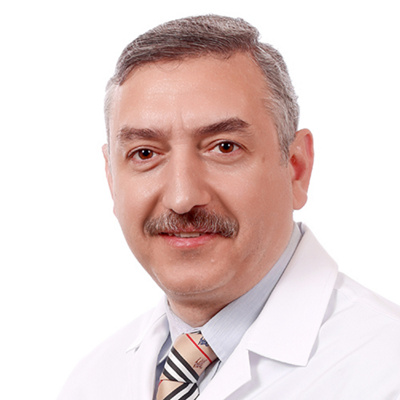Diabetes is a huge and growing problem, and the costs to society are escalating.
In 2013, about 382 million people had diabetes. By 2035, this number will rise to 592 million.
The prevalence of diabetes is very high in the gulf region. The risk of diabetes increases by age so the older we get the more likely we are to develop diabetes.
There is a link between obesity and Type 2 diabetes - the more we weigh, the more likely we are to develop diabetes.
So what is diabetes?
Diabetes is a problem with your body that causes blood glucose (sugar) levels to rise higher than normal. This is also called hyperglycemia. When glucose builds up in the blood instead of going into cells, it can cause two problems:
1- Right away, your cells may be starved for energy.
2- Over time, high blood glucose levels may hurt your eyes, kidneys, nerves or heart by damaging the inner layer of your blood vessels (artheroscerosis).
What are the types of diabetes?
Type 1 diabetes: the pancreas does not produce insulin at all.
Insulin is a hormone that the body needs to get glucose from the blood into the cells.
It can affect people from childhood and it is considered an immune disease. The treatment here is only insulin injections - pills do not work for type 1 diabetes.
Type 2 diabetes: this is the most common form of diabetes and affects mostly adults.
If you have type 2 diabetes your body does not produce enough insulin and does not use insulin properly. This is called insulin resistance. It is also genetic so can run in the family - for example if one parent has diabetes, your risk of developing diabetes is 25% but if both parents have it, your risk is increased to 50%.
Gestational diabetes: when you have high glucose during pregnancy, it is similar to type 2 and most of the time resolves after delivery. You should monitor yourself as you might develop it again in the future, and if it is not well controlled during pregnancy it might have bad effects on the baby.
How can you diagnose diabetes?
We do a test called Fasting Plasma Glucose (FPG).
Fasting means not having anything to eat or drink (except water) for at least eight hours before the test. Diabetes is diagnosed at fasting blood glucose 126 mg/dl or greater on two separate occasions.
Normal fasting glucose: 70 – 100 mg/dl
Pre-diabetes: fasting glucose 101 – 125 mg/dl
We can also diagnose diabetes by a test called Hemoglobin A1C.
The hemoglobin A1C test measures your average blood glucose for the past three months. The advantages of being diagnosed this way are that you don't have to fast before the test. Diabetes is diagnosed at a hemoglobin A1C of greater than or equal to 6.5%.
In addition, we can diagnose diabetes by a test called a glucose tolerance test, during which we will check your blood glucose two hours after we give you glucose drink. If your results are 200 mg/dl then we can confirm the diagnosis. The normal results for this test is up to 140 mg/dl. If the results are between 141 – 199 mg/dl then you have pre-diabetes.
What is pre-diabetes?
- Before people develop type 2 diabetes they have a condition characterised by high blood glucose levels between 101 – 125 mg/dl
- Pre-diabetes is a condition in which blood glucose levels are higher than normal but are not high enough for a diagnosis of diabetes
- People with pre-diabetes are at increased risk for developing type 2 diabetes and for heart disease and stroke
How you prevent Type 2 diabetes if you have pre-diabetes?
- Losing some of your body weight
- Exercising moderately (such as brisk walking) 30 minutes a day, five days a week
- Healthy diet
What are the symptoms of diabetes?
Most of the time there are no symptoms and we discover it when we do a routine check-up. But occasionally you might complain of being tired or thirsty drinking water frequently and urinating frequently, or you might have blurry vision, be hungry more than usual or have numbness.
Complications of diabetes
Hypoglycemia (low blood sugar)
Heart attack
Stroke
Blindness and eye problems (diabetic retinopathy)
Kidney failure which might require dialysis
Neuropathy (affecting the nerves) with tingling and numbness in arms and legs
Diabetic foot (gangrene) which might require amputation
Normally these complications happen after being diabetic for many years, especially if your diabetes is not well controlled. The way to avoid them is by strictly controlling your sugar level under your doctor’s supervision.
Treatment of diabetes:
Most important is the diet, regular exercise and weight loss in addition to medications. These are either oral pills or different types of injections (insulin or a newer class of diabetic injection which also help in reducing weight).
It is important to get screened for high blood pressure and cholesterol if you have diabetes, treat them and control them, as well as avoiding smoking because these can also increase your risk of heart attack and stroke.

